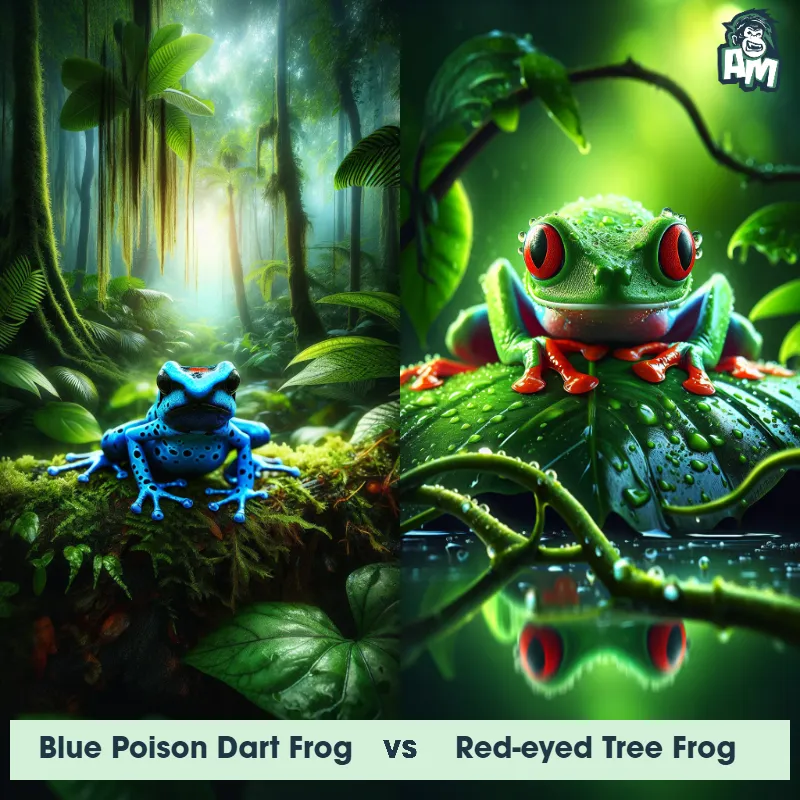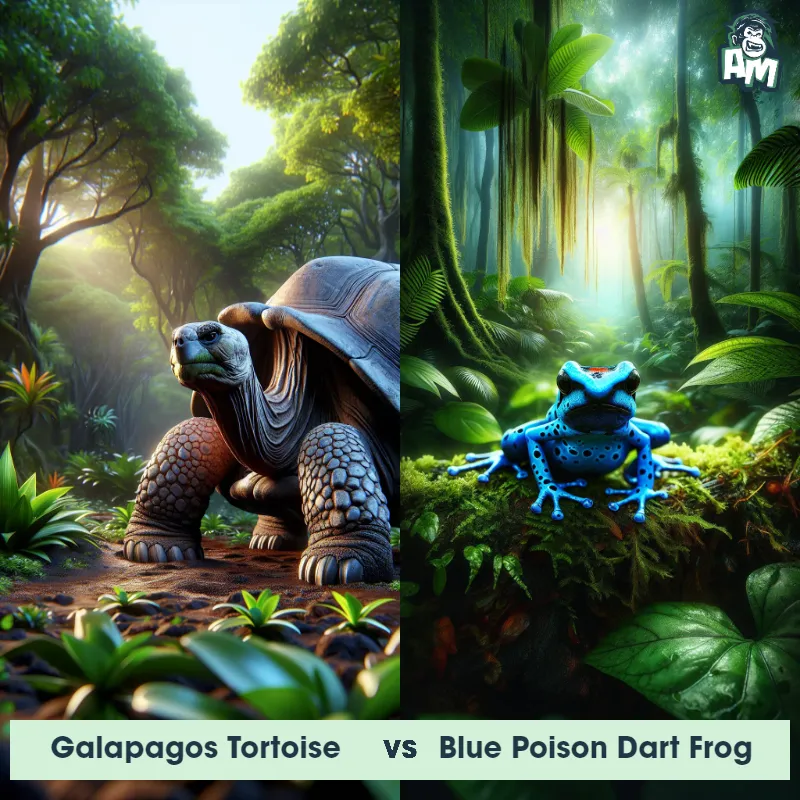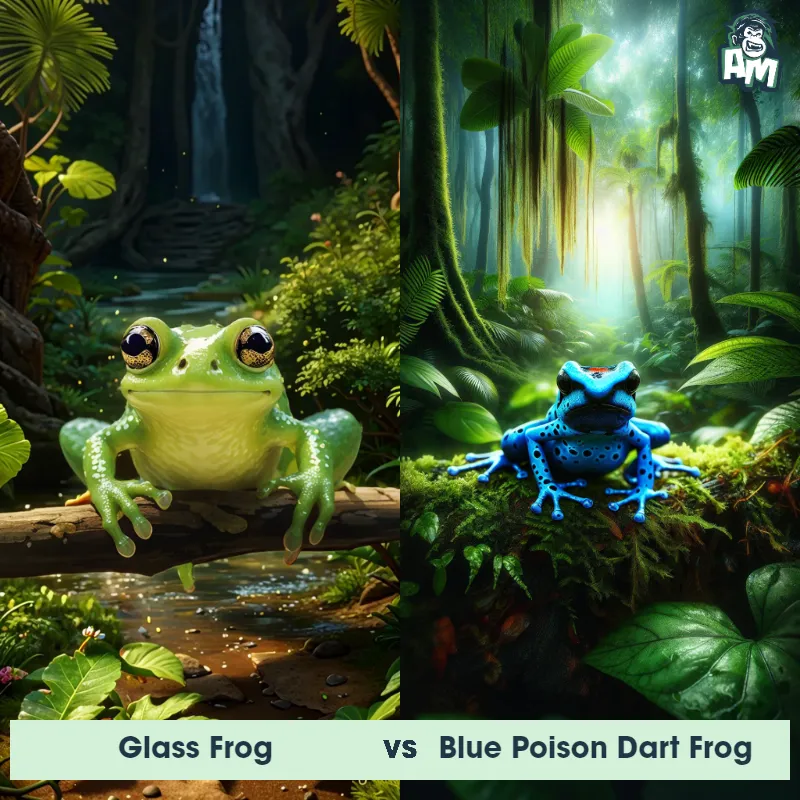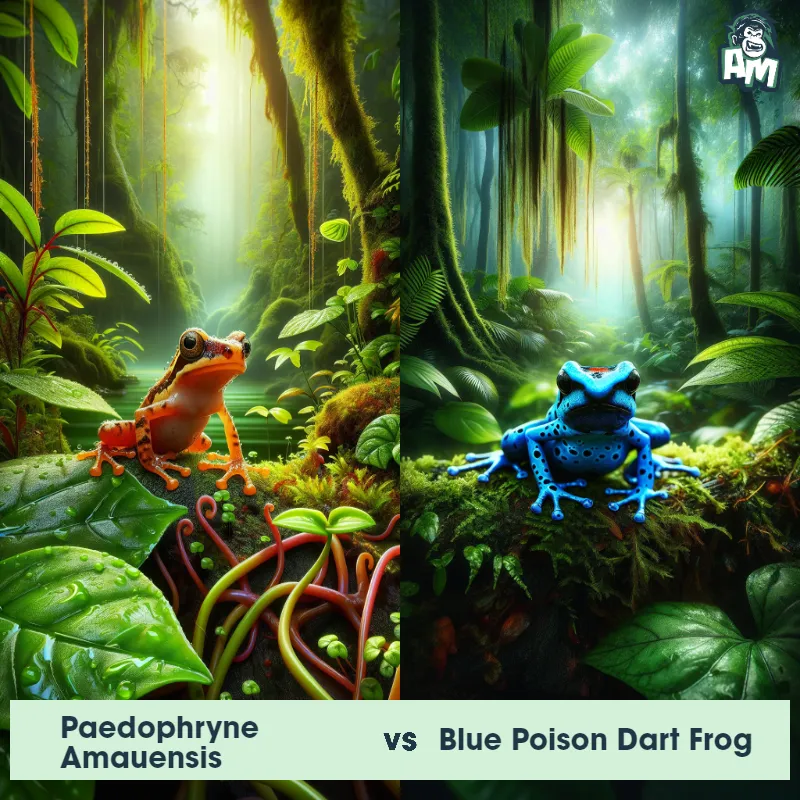The Blue Poison Dart Frog
The Blue Poison Dart Frog, also known as Dendrobates tinctorius azureus, is a small and vibrant amphibian species found in the rainforests of South America. With a length of about 2.5 centimeters, these frogs have a distinct blue hue on their skin, which serves as a warning to predators that they are highly toxic. Their bright coloration is believed to be a result of their diet, consisting mainly of ants and other small arthropods. These frogs possess specialized glands on their skin that secrete potent toxins, making them one of the most poisonous animals in the world. Despite their size, Blue Poison Dart Frogs are known for their powerful jumps and are excellent climbers.
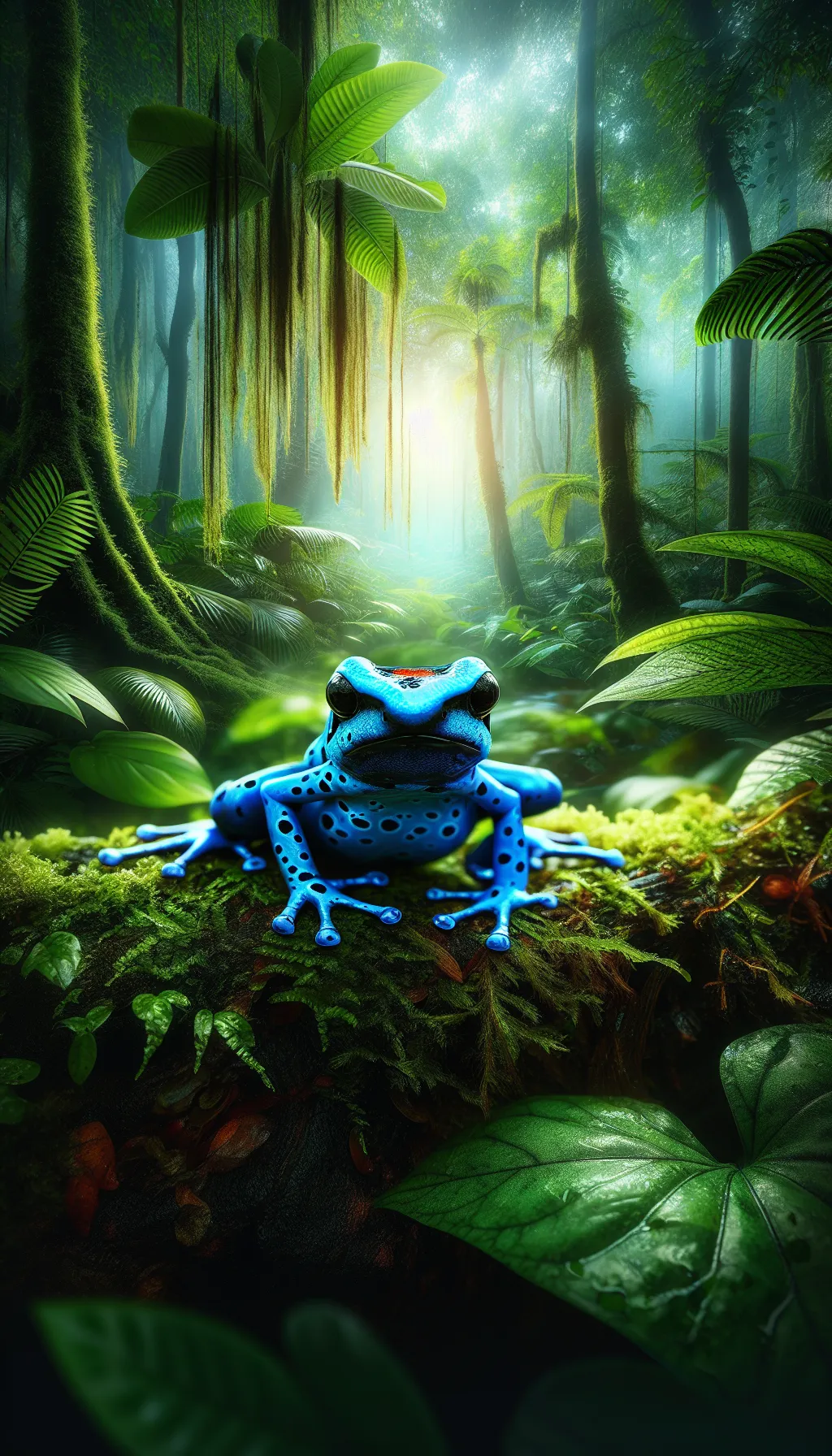
| Blue Poison Dart Frog | |
|---|---|
| Size | 3.5-4.5 cm (1.4-1.8 in) |
| Weight | N/A |
| Speed | 0.006mph (0.01km/h) |
| Key Strength | N/A |
| Biggest Weakness | N/A |
| Scientific Name | Dendrobates azureus |
| Family | Dendrobatidae |
| Habitat | Tropical rainforests |
| Geography | Central and South America |
| Diet | Small invertebrates |
| Lifespan | 2 years - 5 years |

The Blue Poison Dart Frog
The Blue Poison Dart Frog, also known as Dendrobates tinctorius azureus, is a small and vibrant amphibian species found in the rainforests of South America. With a length of about 2.5 centimeters, these frogs have a distinct blue hue on their skin, which serves as a warning to predators that they are highly toxic. Their bright coloration is believed to be a result of their diet, consisting mainly of ants and other small arthropods. These frogs possess specialized glands on their skin that secrete potent toxins, making them one of the most poisonous animals in the world. Despite their size, Blue Poison Dart Frogs are known for their powerful jumps and are excellent climbers.
Fun Fact: The Blue Poison Dart Frog's toxicity is so potent that the indigenous communities of South America have used their secretions to tip their hunting darts and arrows, hence their common name.
| Blue Poison Dart Frog | |
|---|---|
| Size | 3.5-4.5 cm (1.4-1.8 in) |
| Weight | N/A |
| Speed | 0.006mph (0.01km/h) |
| Key Strength | N/A |
| Biggest Weakness | N/A |
| Scientific Name | Dendrobates azureus |
| Family | Dendrobatidae |
| Habitat | Tropical rainforests |
| Geography | Central and South America |
| Diet | Small invertebrates |
| Lifespan | 2 years - 5 years |
Blue Poison Dart Frog Matchups
We use AI to simulate matchups between the Blue Poison Dart Frog and other animals. Our simulation considers size, strength, and natural predatory behaviors to determine the most likely outcome.
Blue Poison Dart Frog: Diet, Predators, Aggression, and Defensive Behaviors
What do Blue Poison Dart Frogs eat?
Blue Poison Dart Frogs primarily eat small insects such as ants, termites, mites, and fruit flies. They have a specialized tongue that helps them capture their prey with precision. In captivity, they can also be fed fruit flies, pinhead crickets, and other small insects.
Do Blue Poison Dart Frogs have any predators?
Blue Poison Dart Frogs have few natural predators due to their bright coloration which warns potential predators that they are poisonous. However, some snake species, birds, and certain mammals are immune to their toxins and may prey on them. Additionally, habitat destruction and human activity pose a threat to their population.
Are Blue Poison Dart Frogs aggressive?
Blue Poison Dart Frogs are not known to be aggressive towards other animals or humans. They are typically solitary animals and do not display territorial behavior. However, they may become stressed or defensive if they feel threatened.
Do Blue Poison Dart Frogs fight?
Blue Poison Dart Frogs do not engage in physical fights as a means of resolving conflicts. Instead, they rely on their toxic skin secretions to deter predators and protect themselves.
How do Blue Poison Dart Frogs defend themselves?
Blue Poison Dart Frogs secrete potent toxins through their skin as a defense mechanism against predators. These toxins can cause paralysis or even death in some animals if ingested or if they come into contact with open wounds. The bright coloration of the frog serves as a warning to potential predators of their toxicity.
What is the Blue Poison Dart Frog's biggest weakness in a fight?
The Blue Poison Dart Frog's biggest weakness in a fight is its size and lack of physical capabilities to overpower larger predators. Despite their toxicity, they can still fall victim to larger predators that are immune to their toxins or able to overcome their defenses through sheer strength. Their best defense mechanism remains their toxic skin secretions rather than physical combat.
Fun Fact: While their blue coloration acts as a warning signal for predators, Blue Poison Dart Frogs raised in captivity on a different diet will lack their distinctive coloration, emphasizing the importance of diet in their pigmentation.
Fun Fact: Blue Poison Dart Frogs exhibit an interesting reproductive behavior known as "parental care," where the male frog is responsible for guarding the eggs after they have been laid. The male will moisten the eggs with water collected from various sources, such as water droplets on leaves, to ensure their survival until they hatch.



